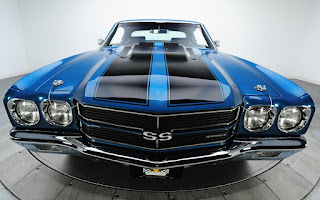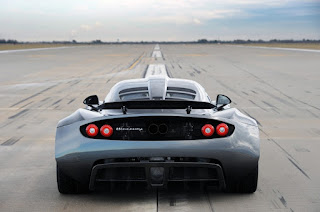What sets a F1 car different from a normal car?
The only common thing between a road car and a formula 1 car is the wheels and the steering wheel. Except that each and everything is different. Even though lots of technologies from F1 car are adapted to road cars, F1 cars are impossible to match.
The basic formula for F1 car is simple though.
1:- Lightweight
2:- Lots of power.
And the most critical factor that sets f1 cars apart is….
3:- Aerodynamics
Combining these three ingredients in right proportions a workshop will bake you a perfect f1 car.
Weight:-
The minimum weight of f1 car with empty fuel tank is around 650kgs. The same of road car is around 1500kgs.
Engine:-
F1 car uses standard v8 engine. It has about 780 Hp for better performance and better toque.
While a roadster use 1.4-1.8 ltr. Engine having 90-130 Hp.
Gearbox:-
F1 car uses 7 speed semi controlled electrical gearbox while a roadster has 5 speed manual or automatic gear box.
But a F1 gearbox lasts only 1500 kms. while the gearbox of a street car lasts 100 times than that.
Brakes:-
F1 car uses carbon fibre disc brakes while a street car uses disc brakes at front end only or as per requirement.
Tires:-
A formula 1 tire is designed to last for maximum of 200kms. While that of a road car lasts for much more time period. The street car tires are designed to operate in all weather condition. They can be used in dry as well as wet condition. Also are designed keeping in mind less resistance for fuel economy. Opposite to it, F1 car tires are made as light as possible and also are made of more rubber to accommodate in high temperature due to braking force. The amount of rubber left on a race track during a season leads up to over 100 tonnes.
From all these you will think that the f1 cars are some sort of dream cars to drive.With the American GP at our doorsteps (this Monday), we bring you some trivia about F1 racing. Most of these facts might not come as a surprise to serious fans. However, there are few things in here that are bound to stump even the most seasoned F1 observers.
Fact One: Since F1 drivers have to endure high G forces at extremely hot temperatures, they tend to lose close to 4 kg after every race! However, they gain that weight back soon after their bodies are replenished with fluids and food.
Fact Two: F1 drivers lose about 3 litres of water during a race. Such acute water loss could impair their psycho-physical abilities, which is why drivers drink a lot of water before every race to keep their fluid levels in check.
Fact Three: Since F1 cars are extremely compact, drivers must remove the steering wheel to get in and out of the cockpit.
Fact Four: The cockpits of F1 cars also have a water bottle in them. A driver can sip this water--which has mineral salts in it--through a pipe that goes through a hole in his helmet.
Fact Five: All drivers are assigned numbers. The reigning champion gets No. 1, and his teammate gets No. 2. The rest of the numbers are assigned according to team standings from the previous season.
Fact Six: The number 13 is never assigned to a F1 driver. The only two times in F1 history that No. 13 was assigned to a driver was in qualifiers way back in 1963 and 1976. While one of these drivers was Moises Solana, the other one happened to be Divina Galica--one of only five women to compete in the sport.
Fact Seven: Italian Lella Lombardi is the only female driver to score points--or should we say, half a point--in F1. She managed to place 6th in the 1975 Spanish Grand Prix and scored a historic '0.5.'
Fact Eight: The minimum permissible weight for a Formula 1 car is 640 kg including the driver, fluids, and on-board cameras. Cars frequently come in underweight--some as light as 440 kg, so teams add ballast to comply with the weight regulation.
Fact Nine: It's no secret that F1 can be a deadly sport. However, this fact becomes glaringly obvious when one realizes that 46 drivers have lost their lives behind the wheel of a F1 car. Over the years, Ferrari has lost the most number of drivers--seven--to fatal crashes.
Having said that, the sport has become much safer than it was a couple of decades ago. The last fatality was the Ayrton Senna's crash back in 1994.
Fact Ten: The deceleration experienced by a F1 driver when he hits his brakes is equivalent to driving a car through a brick wall!
The basic formula for F1 car is simple though.
1:- Lightweight
2:- Lots of power.
And the most critical factor that sets f1 cars apart is….
3:- Aerodynamics
Combining these three ingredients in right proportions a workshop will bake you a perfect f1 car.
Weight:-
The minimum weight of f1 car with empty fuel tank is around 650kgs. The same of road car is around 1500kgs.
Engine:-
F1 car uses standard v8 engine. It has about 780 Hp for better performance and better toque.
While a roadster use 1.4-1.8 ltr. Engine having 90-130 Hp.
Gearbox:-
F1 car uses 7 speed semi controlled electrical gearbox while a roadster has 5 speed manual or automatic gear box.
But a F1 gearbox lasts only 1500 kms. while the gearbox of a street car lasts 100 times than that.
Brakes:-
F1 car uses carbon fibre disc brakes while a street car uses disc brakes at front end only or as per requirement.
Tires:-
A formula 1 tire is designed to last for maximum of 200kms. While that of a road car lasts for much more time period. The street car tires are designed to operate in all weather condition. They can be used in dry as well as wet condition. Also are designed keeping in mind less resistance for fuel economy. Opposite to it, F1 car tires are made as light as possible and also are made of more rubber to accommodate in high temperature due to braking force. The amount of rubber left on a race track during a season leads up to over 100 tonnes.
From all these you will think that the f1 cars are some sort of dream cars to drive.With the American GP at our doorsteps (this Monday), we bring you some trivia about F1 racing. Most of these facts might not come as a surprise to serious fans. However, there are few things in here that are bound to stump even the most seasoned F1 observers.
Fact One: Since F1 drivers have to endure high G forces at extremely hot temperatures, they tend to lose close to 4 kg after every race! However, they gain that weight back soon after their bodies are replenished with fluids and food.
Fact Two: F1 drivers lose about 3 litres of water during a race. Such acute water loss could impair their psycho-physical abilities, which is why drivers drink a lot of water before every race to keep their fluid levels in check.
Fact Three: Since F1 cars are extremely compact, drivers must remove the steering wheel to get in and out of the cockpit.
Fact Four: The cockpits of F1 cars also have a water bottle in them. A driver can sip this water--which has mineral salts in it--through a pipe that goes through a hole in his helmet.
Fact Five: All drivers are assigned numbers. The reigning champion gets No. 1, and his teammate gets No. 2. The rest of the numbers are assigned according to team standings from the previous season.
Fact Six: The number 13 is never assigned to a F1 driver. The only two times in F1 history that No. 13 was assigned to a driver was in qualifiers way back in 1963 and 1976. While one of these drivers was Moises Solana, the other one happened to be Divina Galica--one of only five women to compete in the sport.
Fact Seven: Italian Lella Lombardi is the only female driver to score points--or should we say, half a point--in F1. She managed to place 6th in the 1975 Spanish Grand Prix and scored a historic '0.5.'
Fact Eight: The minimum permissible weight for a Formula 1 car is 640 kg including the driver, fluids, and on-board cameras. Cars frequently come in underweight--some as light as 440 kg, so teams add ballast to comply with the weight regulation.
Fact Nine: It's no secret that F1 can be a deadly sport. However, this fact becomes glaringly obvious when one realizes that 46 drivers have lost their lives behind the wheel of a F1 car. Over the years, Ferrari has lost the most number of drivers--seven--to fatal crashes.
Having said that, the sport has become much safer than it was a couple of decades ago. The last fatality was the Ayrton Senna's crash back in 1994.
Fact Ten: The deceleration experienced by a F1 driver when he hits his brakes is equivalent to driving a car through a brick wall!




Comments
Post a Comment